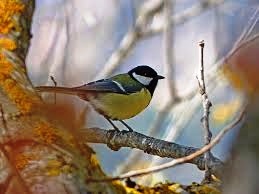Feral cat, Hattie, lives in my backyard.
A Bedding Upgrade
Hattie, a semi-feral cat, has been living in my backyard for more than seven years. Her feeding station is a large box covered with a tarp to keep out the wind. It’s large enough for her to have a water dish, a food bowl, and some bedding, so I’ve been using old bath mats to give her a place to curl up during the day and keep her feet warm and dry.
Hattie is an excellent hunter, and during the winter her feeding station becomes littered with bird feathers. Now that spring is here, at least in theory, since this is New England, I was planning on washing her mat on a warm day when there was enough time to dry it and replace it for her.
A few nights ago, at dusk, I spied a raccoon hanging out beneath the bird feeders. The feeders are only available in the late fall, winter, and early spring because the bears are awake in the summer and will knock everything down.
The raccoon seemed content to eat off the ground, or so I thought. The next morning, one of my feeders had had the top opened and was now empty. It was clear that the squirrel baffle, which worked just fine at keeping the squirrels on the ground, was not a challenge for this very beautiful raccoon.

So I decided to bring that particular feeder in at night, since the other one couldn’t be opened so easily, and didn’t give the matter any additional thought.
Then yesterday morning, when I went out to give Hattie her breakfast, I was astonished to discover that the floor mat inside her feeding station was completely missing. There was no damage to anything, but it just was no longer there.
This particular mat I had purchased especially for Hattie. It’s 100% cotton and very thick, and I had folded it in half, so the insulation was excellent.
I asked Hattie if she knew what had happened to her mat, but she didn’t. She told me it was gone when she got up that morning. The water dish had not been knocked over or even knocked into, as the floor of her station was dry.
Bears don’t care about floor mats, and the remaining feeder was undisturbed.
My surmise is that the raccoon, who had been washing her feet in the Hattie’s water dish after eating, had discovered the mat and decided to take it home. I suspect she’s planning on using it for a litter of babies. It probably smelled just great to her, as it had some of Hattie’s fur and bird feathers attached to it.

Of course, Hattie has another mat now, as I contributed one of the house ones that had gone into the wash earlier that morning.
As for the raccoon?
Nedda: “Hi. I’m one of the people whose bird feeder you’ve been eating at.”
Raccoon: “Oh, yes. Thanks for the food.”
Nedda: “Did you take anything else while you were in my yard?”
Raccoon: “Yes.”
Nedda: “Was it soft and dark brown in color, and something you had to drag away? If so, I would call that a ‘mat’.”
Raccoon: “I’m not bringing it back.”
Nedda: “Of course not. I wouldn’t ask you to do that. I just wanted to know if you took it.”
Raccoon: “Yes. It’s for my nest/babies.”
Nedda: “I thought that might be the case. I hope you and your babies enjoy it.”
Raccoon: “Best bedding ever!”
Mystery solved!
Hattie says she likes her new mat even better than the old because it’s fluffier. So if I buy her a new one, I’ll be sure get a fluffy one next time. For now, she’s content, and so is the raccoon!









Great story!
I loved this story and have sent the link to some friends. I also appreciated your comment a while back, about how to deal with my worried despair every time I visit the local cat shelter. It was an excellent answer — a genuine solution — and I no longer feel badly about the cats when I visit, but can freely enjoy them and feel I am helping them, too. Thanks!
I have another question. Have you ever communicated with factory farm animals? How about animals who produce milk or eggs (not killed for meat), who may be loved and well treated by their owners? Are they aware of their “purpose” and how do they feel about it?
Hi, Joan,
I have not ever communicated with factory farm animals. I have chatted a bit with some cows who were at a small organic dairy, and they were very happy, but then then were on pasture and were handled a lot and loved. They did have a sense of purpose and were pleased to share their milk. However, I didn’t ask them how they felt about their sons being sent to slaughter. It didn’t come up at the time.